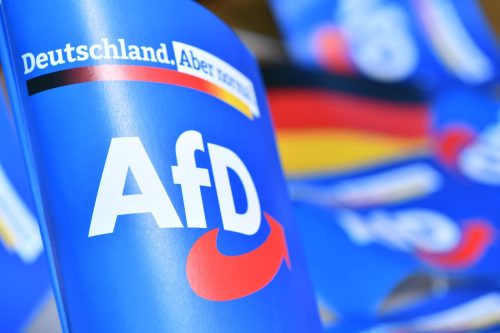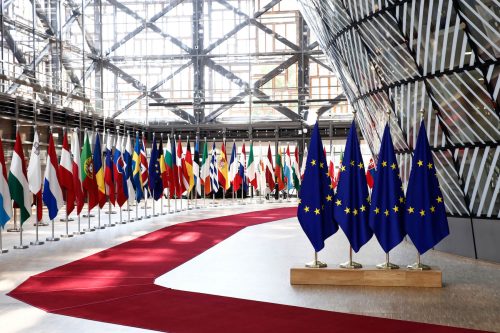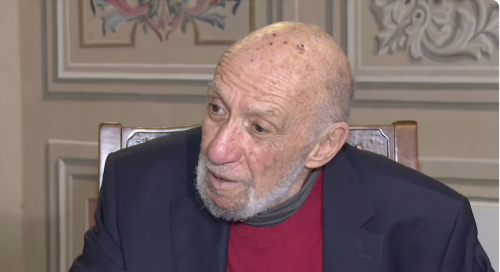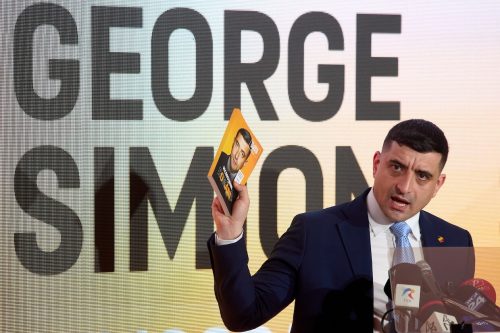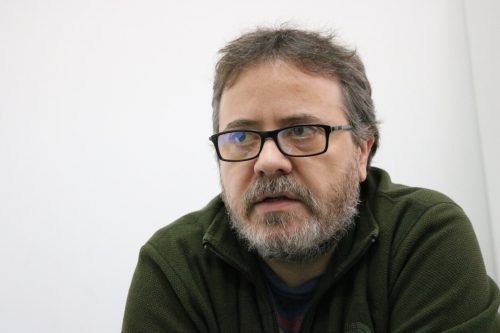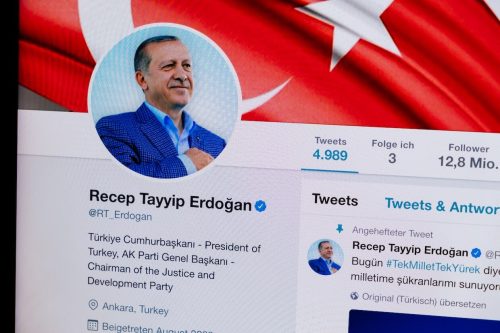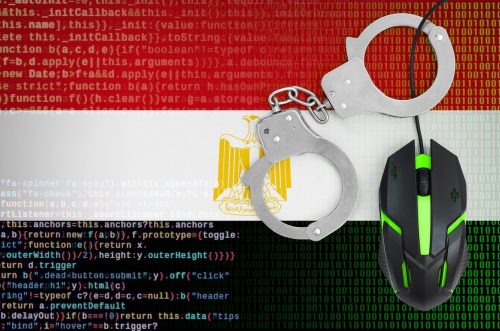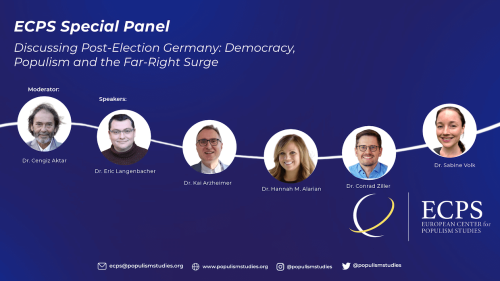Russia

From the days of pre-revolutionary populism to the current Putin regime, nationalism mixed with populism has been a driving force in Russian politics. The shape of the phenomenon has shifted over the decades. Each time a new leader with an ideology promises security (economic and physical), but after assuming power, those in authority become increasingly dictatorial. Putin has maintained his position in the country with an iron fist. In two decades, his power has compromised the chances Russia will opt for a democratic path. He has repeatedly misused various institutions and blurred the lines between the state and institutions to weed out opposition. The country’s safety from moral corruption and physical threats are the predominant crises leveraged by Russian populists. Opposition parties that have survived also use populism to gain public support.
Stretching over a vast expanse of Europe and Northern Asia, Russia—or the Russian Federation (RF)—is the world’s largest country by total area and the most populous country in Europe. Its location and vast landmass have made it home to a highly diverse mass of people from various ethnolinguistic groups and religions. Populism, as we understood it today, is therefore by no means a recent phenomenon for those who live within the borders of the RF.
Indeed, traces of modern populism in Russia date to the 19th century and the Narodnik movement. Narodniks believed that the spread of political propaganda among the rural peasantry—then the largest segment in the population, which lived in poor conditions—would lead to their awakening against the evil and corrupt elite of the tyrannical Tsarist regime and their eventual emancipation. Although it harbored some of the most widely agreed features of populism—namely, the antithetical depiction of “the people” versus “the other”—the Narodnik attempt died off due to its out-of-touch leaders, peasant indifference, and government persecution. All these paved the way for the radicalization of the Narodniks in the mid-1870s, who splintered into two groups, one of which espoused terrorism.
In contrast to the relative failure of Narodnik populism, the “Marxist-Leninist wave” of the 20th century had a significant impact not only in Russia but all around the world in the post-World War II period. This wave also propagated the emancipation of the “man on the street” (ordinary victimized people) from the oppression of an evil (capitalist) elite. The death of the Tsar and the end of the 300-year-old dynasty in 1917 led to a vacuum of power during the chaos of revolution and the civil war. In 1918, the Russian Constituent Assembly declared Russia a democratic federal republic. The civil war, which ended with the defeat of the “white forces” (Tsarists and assorted anti-communist groups) by the communists, saw Russia become the core part of the Soviet Union in 1922.
Although the revolutionary Bolshevik government initially made a set of populist promises to achieve “equality” for the masses and annihilation of the evil elite, these promises were soon replaced by the harsh realities of the totalitarian regime and the emergence of the communist vanguard. Mass killings, curbs on freedoms, persecution of religious groups, forced integration, harsh labor, and starvation became widespread. The communist state and its ambitions rose supreme over “the people” (Daniels, 2007). Despite significant economic growth, extreme state suppression of fundamental rights and human freedoms led to unrest. Once the economy faced sluggish growth and shortages of basic items in the 1980s, it did not take long for various peoples in the Soviet Union to express dissatisfaction with the Soviet elite. As a result, on December 25, 1991, USSR was dissolved. This collapse ushered Russia into a new era (Daniels, 2007).
The fall of the Soviet Union was a traumatizing defeat for many. The country lost substantive chunks of its territory. It became a traumatic event involving loss, anxiety, insecurity, victimhood, and grievances, especially among the Soviet elite and those who had benefited from the old system. However, as far as the ordinary people were concerned, they had the freedom to express their cultural values rooted in centuries of religious and other social elements. This freedom of affiliation has led to a return of pre-revolutionary values, such as conservatism and affiliation with Orthodox Christianity (Evans & Northmore-Ball, 2012).
Apart from cultural change, Russia went through a massive phase of neo-liberal reforms. This started with the privatization of former public sector assets in less-than-transparent terms. Politically the country was also moving away from a single-party system. Russia aspired for socio-economic-political transformation. “The people” have been pledged change against the ruling “elite.” However, inequality continued, and the new capitalist elite who unfairly benefited from the privatization reforms during President Yeltsin’s rule showed that “the man on the street” would continue to suffer from inequality and limits to opportunity for economic improvement.
Yeltsin’s withdrawal from politics led to the rise of Vladimir Putin. Putin was, until this moment, a relatively unknown intelligence official. He had served the state in various capacities in St. Petersburg and Moscow. He gradually rose to prominence within the administration while he oversaw the privatization of public assets. Putin was promoted to become head of the Federal Security Service (FSB) for the Kremlin. He was a “reliable” and was introduced to the public when Yeltsin appointed him prime minister in 1999 (Thomson, 2000).
As a relatively unknown official, Putin’s electability was initially an issue. The construction of Putin’s early populism was reflected in his prosecution of the 1999 Chechen war. During this time, Putin was able to portray himself as Russia’s much needed “strongman” (Burrett, 2020). It was necessary to fight off the many “threats” faced by “the people” of Russia, particularly militant terrorists. This narrative was established when a series of bombings took place in the country. These events were alleged to be a Chechen act of terror. This gave Kremlin enough reason to launch an aggressive campaign against Chechnya, a former Soviet territory. Putin spearheaded the war efforts. The media was continually showing him as a “man of action” taking “tough” and “decisive action” against “threats.” Clips of Putin training soldiers for the battlefield were widely televised (Burrett, 2020).
The war in Chechnya helped him throughout his presidential campaign in 2000. He was able to fuel xenophobic nationalism. With the fear of insecurity, “the people” naturally rallied behind this strongman (Burrett, 2020). In the new populist narrative, “the people” was limited to ethnic Russians, while anyone categorized as an enemy of the state became “the other.” Putin was the man who promised to deliver “Great Russia” to its people (Burrett, 2020).
Over the last two decades, Putin has maintained power by alternating in office between the presidency and the prime ministership. The hallmarks of his populism have only grown more autocratic over time. He has altered the constitution to extend his time in office. His regime has also actively crushed opposition. The judiciary has been used to harass any dissenting voices. The controlled media constructs his narrative as “truth.” With elected loyalists placed in key positions and promoted through clientelism, Putin has become untouchable (Burrett, 2020; Mamonova 2018).
Vladimir Putin has been able to achieve all these by ensuring a direct connection with “the people.” His direct connection is formed on a series of fronts. For instance, Putin regularly visits regional towns to meet local people. On these trips, he listens to their problems. At times he also scolds “misbehaving” and “corrupt” officials who underperform or fail to deliver (Euronews, 2021; Mamonova, 2018; Sperling, 2016). The leader also partakes in everyday celebrations and religious rituals. One such event is the “Epiphany Bath,” a religious ritual celebrated annually by believers submerging themselves into ice-cold water. Putin’s ritual participation is a public display of his commitment to the Orthodox faith, Russian traditions, and its people while also demonstrating strength and physical prowess (Euronews, 2021; Mamonova, 2018; Sperling, 2016).
Putin has also relied on the Orthodox Church and the people’s conservative sentiments to fortify his power. After decades of oppression, the Church is again at the center of politics. As people are freer to affiliate and practice their faith, communist flashbacks induce anxiety (Mrachek & McCrum, 2019). Putin has reasserted this fear by arguing the existence of a “moral crisis” in the country. The LGBTQ community and feminists have been targeted for their commitment to “Western” liberal values. They are cast —often by senior Church leaders —as “corrupt” or a “perversion,” in direct contrast with conservative “family values” of “the people.” The Orthodox Church has thus been reduced to Putin’s mouthpiece (Mrachek & McCrum, 2019).
The media has been a significant resource in Putin’s populist narrative-building. Regime-orchestrated populist propaganda targets dissidents. As a recent example, Alexei Navalny, the face of opposition to Putin, has been portrayed as a “threat” to Russia. Navalny, who has deeply embarrassed Putin with his revelations of regime corruption, was recently poisoned and later arrested by the Russian security forces. He is cast in the state media as a pro-Western agent. His defiance of the regime has seen Navalny become entangled in a manufactured embezzlement case (Cliffe, 2021; Mamonova, 2018).
As another part of Putin’s populist persona is his “hyper-masculine” public image and representation. From the Chechnya war to the annexation of the Crimea, Putin has always portrayed Russia as a “strong” state. Through his “strongman” example, he can portray a vision of Russian statehood that resists “stress,” “anxiety,” and “turmoil.” The macho protagonist Putin is able to address any challenge. He has been widely portrayed actively participating in military drills, and songs about his bravery have also been broadcast throughout Russia over the years (Sperling, 2016).
Putin’s public displays of fighting spirit are ever-present and on various fronts. In the earliest periods, external threats were the key triggers. Later he was cast as being up against the oligarchs. In 2000, he publicly stated: “Our priority is to protect the market against illegal [appropriation], both by government bureaucrats and by criminals… All economic entities should be [on] an equal playing field.” This narrative has changed, and now the danger and menace are posed by Europe and the US. They are increasingly portrayed as threats to the Russian people (Mamonova, 2018).
Putin’s evolving nationalistic populism has paved the way to legitimating his authoritarian rule, political mobilization of the masses, constant majoritarian electoral support, and justification for securitization, repression, and elimination of the opposition. Early on, Putin destroyed Mikhail Khodorkovsky, a key oligarch, and supporter of Yeltsin-era opposition parties. Putin used various corruption and tax evasion cases against him. Prolonged harassment led Khodorkovsky to seek asylum while he lost all his assets. Putin thus successfully used an aggressive campaign to frame Khodorkovsky as the epitome of a “corrupt elite.” This attack saw public anger directed at Khodorkovsky, allowing Putin to eliminate a key opposition figure. His seized assets were distributed among Kremlin loyalists, a pattern that has become the norm. Putin has also jailed several opposition leaders. Most who dare to speak against him are implicated in corruption scandals. At times, they are also labeled as existential threats to the Russian people’s national identity, being loyalists and puppets of the West that caused the defeat of the Soviet Union, hence Russia. Securitization of the opposition and framing them as corrupt enemies of the people have made opposition against him virtually impossible (Langdon & Tismaneanu, 2020; Sperling, 2016).
Currently, Putin is affiliated with the ruling populist party, United Russia (Yedinaya Rossiya). It was formed in 2001 by merging two significant parties, the Unity Party and the Fatherland–All Russia Party. It is Russia’s largest party and currently holds 336 of 450 seats in the lower house of the Russian parliament (the Duma). It has continuously constituted the majority in the parliament since 2007. The party’s narrative purports to transcend the communism versus capitalism binary. Instead, it offers the people stability vis-à-vis the nation’s major problems such as economic issues, separatism in different parts of the Russian Federation, the political upheavals of the 1990s, and Russia’s main enemy, the West, together with its local pawns. Its 2003 political manifesto declared its primary objective as minimizing the differences between the rich elite and the poor “man on the street” (McFaul and Stoner-Weiss 2010).
The country’s two other recognized opposition parties are the Liberal Democratic Party of Russia (LDPR) and the Communist Party of the Russian Federation (CPRF). These parties remain meek under the tightly regulated and controlled political environment. While ideologically different, both parties have drawn to some extent on populist rhetoric. For instance, the far-right LDPR has extremely conservative social stances, espouses Europhobia, and promises “miracle” solutions through a hybrid economic model. Their suggested solutions to complex problems are easy, and their logic rests heavily on “common sense” rhetoric. For example, closing off borders is proposed as a solution to the immigration issue. The party has also pledged to solve all crimes within three years (Amiantova & Mikhaylova, 2019). The CPRF uses the same populist rhetoric. However, it is ideologically different as it seeks inspiration from far-left Leninism.
In the two decades of power, Putin’s authoritarian grip has only intensified. A blend of nationalism-based populist rhetoric rooted in xenophobia, religion, traditional cultural values, economic growth, and the image of a “strongman” have helped him retain power. However, a trend of economic slowdown and poor handling of the COVID-19 pandemic have led many to question Putin’s longevity. Today’s Russia is open to the world. The increased use of the internet has also boosted pro-democracy protestors’ momentum against the Kremlin (Cliffe, 2021). However, it is unclear if Putin will ever be willing to switch from a one-man show to actual democracy in Russia despite these developments.
By Ihsan Yilmaz & Kainat Shakil
March 3, 2021
References
— (2021). “Russians submerge in frozen waters to mark Epiphany” Euronews. January 19, 2021. https://www.euronews.com/2021/01/19/russians-submerge-in-frozen-waters-to-mark-epiphany (accessed on January 29, 2021).
— (2021). “Socialist Revolutionary Party”. Britannica. https://www.britannica.com/topic/Socialist-Revolutionary-Party (accessed on January 29, 2021).
Amiantova, Irina S. & Mikhaylova, Natalia V. (2019). “The Outlooks of Using the European Populists Experience in the Development of Political Parties in the Post-Soviet Space.” Journal of Politics and Law. 12(4). https://doi.org/10.5539/jpl.v12n4p31
Burrett, Tina. (2019). “Charting Putin’s Shifting Populism in the Russian Media from 2000 to 2020.” Politics and Governance. 8, 193–205. DOI: 10.17645/pag.v8i1.2565.
Cliffe, Jeremey. (2021). “The persecution of Alexei Navalny reveals the weaknesses of Putin’s Russia.” The New Stateman. Jan. 22, 2021. https://www.newstatesman.com/world/europe/2021/01/persecution-alexei-navalny-reveals-weaknesses-putin-s-russia (accessed on January 29, 2021).
Daniels, R. (2007). The Rise and Fall of Communism in Russia. Yale University Press.
Evans, G., & Northmore-Ball, K. (2012). The Limits of Secularization? The Resurgence of Orthodoxy in Post-Soviet Russia. Journal for the Scientific Study of Religion. 51(4), 795-808. http://www.jstor.org/stable/23353833 (accessed on January 29, 2021).
Fossato, Floriana. (1999). “Russia: Analysis – Reasons Behind Yeltsin’s Resignation.” Radio Free Europe: Europe Library. Dec. 9, 1999. https://www.rferl.org/a/1093002.html (accessed on January 29, 2021).
Langdon C. K and Tismaneanu, V. (2020). Putin’s Totalitarian Democracy: Ideology, Myth, and Violence in the Twenty-First Century. DOI: 10.1007/978-3-030-20579-9
Mamonova, Natalia. (2018). “Vladimir Putin – a tsar without loyal subjects?” Utrikes Magasinet. April 2018. https://www.ui.se/utrikesmagasinet/analyser/2018/april/vladimir-putin–a-tsar-without-loyal-subjects/ (accessed on January 29, 2021).
McFaul, Michael; Stoner-Weiss, Kathryn (2010). “Elections and Voters”. In White, Stephen (ed.). Developments in Russian Politics 7. New York: Palgrave Macmillan.
Mrachek, A. and McCrum, S. (2019). “How Putin Uses Russian Orthodoxy to Grow His Empire.” The Heritage Foundation. Feb. 22, 2019. https://www.heritage.org/europe/commentary/how-putin-uses-russian-orthodoxy-grow-his-empire (accessed on January 29, 2021).
Sperling, V. (2016). “Putin’s macho personality cult.” Communist and Post-Communist Studies. 49(1). DOI: 10.1016/j.postcomstud.2015.12.001.
Tompson, W. (2000). “Putin’s Power Plays.” The World Today. 56(7), 14-16. http://www.jstor.org/stable/40476417 (accessed on January 29, 2021).





